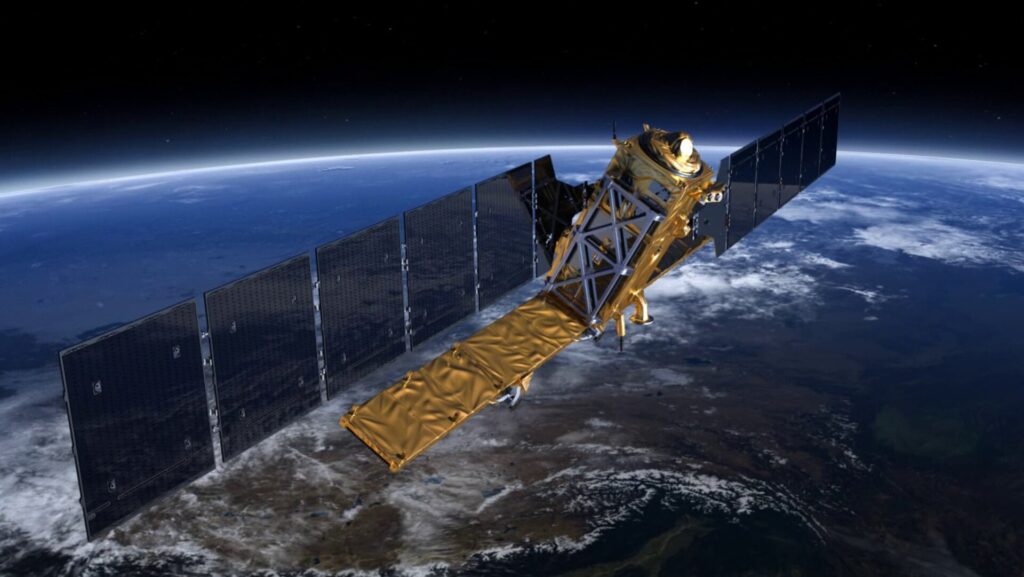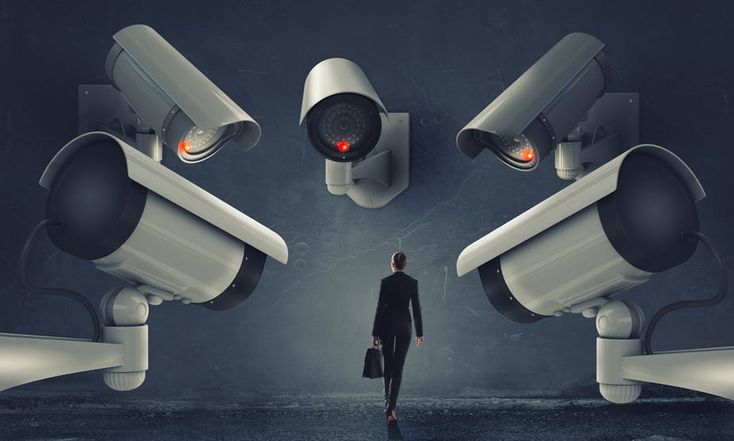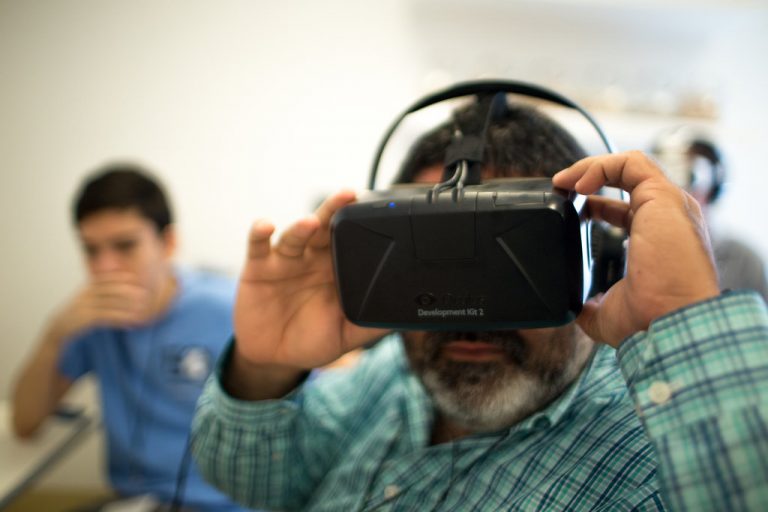
Security surveillance has become an integral part of our lives, and it is evolving at an unprecedented pace. The future of security surveillance is not just about cameras and alarms, but also about artificial intelligence, machine learning, and the Internet of Things (IoT). In this blog, we will take a deep dive into the evolving landscape of security surveillance and explore the trends that are shaping its future.
The first trend that is shaping the future of security surveillance is the integration of artificial intelligence and machine learning. These technologies are being used to develop intelligent surveillance systems that can detect and respond to threats in real-time. For example, facial recognition technology can be used to identify individuals and track their movements, while machine learning algorithms can be used to analyze data from multiple sources to identify patterns and anomalies.
The second trend is the increasing use of the Internet of Things (IoT) in security surveillance. IoT devices such as smart cameras and sensors can be used to monitor and secure homes, businesses, and public spaces. These devices can be connected to the internet and controlled remotely, making it easier to manage and monitor security systems.
The third trend is the growing importance of data privacy and security. With the increasing amount of data being collected by security surveillance systems, it is important to ensure that this data is protected and used ethically. This includes implementing strong encryption and security protocols, as well as ensuring that data is only collected and used for legitimate purposes.
The Sentinel’s Vision: Navigating the Future of Security Surveillance.

Security surveillance has come a long way since its inception. The advent of Artificial Intelligence (AI) and Machine Learning (ML) has revolutionized the way we approach security. In this blog, we will explore the future of security surveillance and how it is being shaped by AI and ML.
The Sentinel’s Vision is a new approach to security surveillance that is being developed by Fujitsu. It is an intelligent CCTV system that uses AI and ML to analyze thousands of video feeds in real-time. This system can recognize patterns and anomalies to known patterns, which makes it smart and intelligent. The Sentinel’s Vision is being used in key areas such as recognizing fraudulent point-of-sale activity (POS) in retail and flagging suspicious behavior at ATMs, to underpinning security solutions for unattended luggage in train stations or reuniting lost children with their guardians
The Sentinel’s Vision is a prime example of how AI and ML are being used to augment human strengths and enrich the capabilities of CCTV to support business and community needs. It is also a testament to how AI and ML can help us recognize issues before they happen, making it an essential tool to combat security risks.
The continued need for CCTV capabilities is only increasing, and the requirement for constant surveillance is too much for the human eye alone. AI technology and machine learning can help us overcome these limitations and provide us with a smarter and more intelligent CCTV system.
Eyes Everywhere: Unveiling the Evolution of Security Surveillance.

In an era where technological advancements are reshaping every aspect of our lives, the realm of security surveillance stands at the forefront, witnessing an unprecedented evolution. The journey from traditional closed-circuit cameras to intelligent, interconnected systems has not only transformed how we perceive security but has also become an integral part of our daily lives.
The Genesis and Growth:
The roots of security surveillance trace back to simple closed-circuit television (CCTV) systems, often limited to basic monitoring and recording. These humble beginnings have evolved into a sophisticated network of cameras, sensors, and analytics, collectively serving as the vigilant eyes of the modern world. The growth of this industry has been exponential, fueled by the surging demand for enhanced security and the infusion of cutting-edge technologies.
Intelligence Redefined:
At the heart of the evolution lies the infusion of artificial intelligence (AI). Modern surveillance systems have transcended mere video capturing; they now possess the ability to interpret and analyze data in real-time. Facial recognition, behavior analysis, and object tracking are no longer the stuff of science fiction but integral features driving the efficiency of surveillance solutions. These intelligent systems empower security personnel to proactively respond to potential threats, preventing incidents before they escalate.
The Internet of Things (IoT) Integration:
The synergy between security surveillance and the Internet of Things (IoT) has ushered in a new era of interconnectedness. Cameras, sensors, and other surveillance devices seamlessly communicate, creating a web of information that enhances overall situational awareness. This integration extends beyond traditional boundaries, enabling not only remote monitoring but also predictive analytics. Smart cities, in particular, leverage this connectivity to optimize traffic management, public safety, and emergency response systems.
Cloud-Based Revolution:
The cloud has become a game-changer in the world of security surveillance. Traditional storage limitations are being overcome, and analytics are no longer confined to on-premises hardware. Cloud-based solutions offer scalability, accessibility, and cost-effectiveness, making it easier for organizations to manage vast amounts of data generated by surveillance systems. This shift has implications for businesses, allowing for more flexible and dynamic security strategies.
Privacy Concerns and Ethical Considerations:
However, this evolution is not without its challenges. As the surveillance landscape advances, concerns about privacy and ethical considerations intensify. Striking a balance between security and individual privacy has become a critical focal point. Regulations are emerging to address these concerns, emphasizing the responsible use of surveillance technologies. It’s imperative for the industry to navigate these ethical waters, ensuring that the benefits of surveillance do not compromise individual rights.
Looking Forward:
As we peer into the future, the evolution of security surveillance shows no signs of slowing down. Emerging technologies such as 5G connectivity, quantum computing, and advanced sensor technologies promise even greater capabilities. The focus is shifting towards not just monitoring and reacting but predicting and preventing. The surveillance landscape is set to become more intelligent, interconnected, and efficient, with a profound impact on industries ranging from retail and hospitality to critical infrastructure and public safety.
Guardians of Tomorrow: A Deep Dive into the Evolving World of Surveillance Tech.

In an age marked by rapid technological advancements, the realm of surveillance technology emerges as the guardian of tomorrow, promising a future where security is not just a concept but an intelligent, proactive force. This blog post takes a deep dive into the evolving landscape of surveillance tech, exploring the transformative innovations shaping our world.
The Technological Tapestry:
The narrative begins by unraveling the intricate technological tapestry that defines modern surveillance. From conventional closed-circuit cameras to an interconnected web of intelligent devices, the evolution is profound. Surveillance tech is no longer limited to passive observation; it is a dynamic ecosystem interwoven with artificial intelligence (AI), the Internet of Things (IoT), and cutting-edge analytics.
Artificial Intelligence at the Helm:
At the core of the evolving world of surveillance tech is the infusion of artificial intelligence. The blog navigates through the ways in which AI revolutionizes surveillance, introducing capabilities that transcend mere video recording. Facial recognition, behavior analysis, and predictive modeling empower these systems to analyze vast amounts of data in real-time, transforming surveillance from a reactive to a proactive force.
Surveillance technology has come a long way since the days of closed-circuit television (CCTV) cameras. Today, it is a multi-billion dollar industry that is constantly evolving to keep up with the changing landscape of cyber threats. In this blog, we will take a deep dive into the world of surveillance tech and explore some of the latest trends and innovations.
One of the most significant trends in surveillance technology is the use of artificial intelligence (AI) and machine learning (ML) algorithms. These technologies are being used to analyze vast amounts of data in real-time, allowing security personnel to identify potential threats before they become a problem. For example, facial recognition software can be used to identify individuals who are on a watchlist, while predictive analytics can be used to anticipate potential security breaches.
Another trend in surveillance technology is the use of drones. Drones equipped with high-resolution cameras can be used to monitor large areas from the air, providing a bird’s eye view of the situation. This technology is particularly useful in situations where it is difficult or dangerous for humans to access, such as disaster zones or conflict zones.
However, the use of surveillance technology is not without controversy. Critics argue that it is an invasion of privacy and can be used to target specific groups of people unfairly. There are also concerns about the potential for abuse, particularly in countries with authoritarian regimes.
Beyond Boundaries: The Cutting Edge of Security Surveillance Innovations.

In the ever-evolving landscape of security surveillance, the blog post “Beyond Boundaries: The Cutting Edge of Security Surveillance Innovations” explores the forefront of technological advancements that transcend conventional limits, redefining the very nature of security.
The blog starts by acknowledging the transformative journey of security surveillance from traditional closed-circuit cameras to the current era marked by cutting-edge innovations. The narrative emphasizes that these innovations are not just incremental improvements but represent a leap beyond traditional boundaries.
The cutting-edge technologies at the heart of this transformation are unveiled, with a focus on how artificial intelligence (AI) is reshaping surveillance capabilities. AI-powered analytics, facial recognition, and behavioral monitoring take center stage, empowering surveillance systems to not only passively record but actively analyze and interpret complex scenarios in real-time.
A crucial aspect explored in the blog is the integration of the Internet of Things (IoT) into the realm of security surveillance. The interconnected network of devices, sensors, and cameras creates a dynamic ecosystem that goes beyond physical constraints, allowing for comprehensive monitoring and predictive analytics. This interconnectedness is presented as a game-changer, fostering a new era where surveillance is not confined but expands beyond boundaries.
Cloud-based solutions are highlighted as a pivotal component in pushing these innovations to new heights. The blog delves into the scalability and accessibility offered by the cloud, enabling organizations to handle vast amounts of data generated by surveillance systems efficiently. This shift is positioned as a means to break free from traditional storage limitations, embracing a more dynamic and responsive approach to security.
As the narrative unfolds, ethical considerations and privacy concerns are acknowledged. The blog emphasizes the responsibility of the industry to navigate these challenges, ensuring that the innovations in security surveillance are deployed in a manner that respects individual rights and privacy.
Conclusion
security surveillance is an essential part of our lives, and it is evolving rapidly. The integration of artificial intelligence and machine learning, the increasing use of IoT devices, and the growing importance of data privacy and security are all trends that are shaping the future of security surveillance. As we navigate this evolving landscape, it is important to ensure that these technologies are used ethically and responsibly to protect our safety and security.
The Sentinel’s Vision is a glimpse into the future of security surveillance. It is an intelligent CCTV system that uses AI and ML to analyze thousands of video feeds in real-time. This system can recognize patterns and anomalies to known patterns, which makes it smart and intelligent. The Sentinel’s Vision is being used in key areas such as recognizing fraudulent point-of-sale activity (POS) in retail and flagging suspicious behavior at ATMs, to underpinning security solutions for unattended luggage in train stations or reuniting lost children with their guardians. It is a prime example of how AI and ML are being used to augment human strengths and enrich the capabilities of CCTV to support business and community needs.
The evolution of security surveillance paints a picture of a world where the watchful eyes are not just everywhere but are intelligent, interconnected, and ethically managed. It’s a journey that transforms how we perceive and implement security, ultimately contributing to a safer and more secure future.
the world of surveillance technology is constantly evolving, with new innovations and trends emerging all the time. While these technologies have the potential to improve security and safety, it is important to balance this against the need to protect individual privacy and civil liberties.
